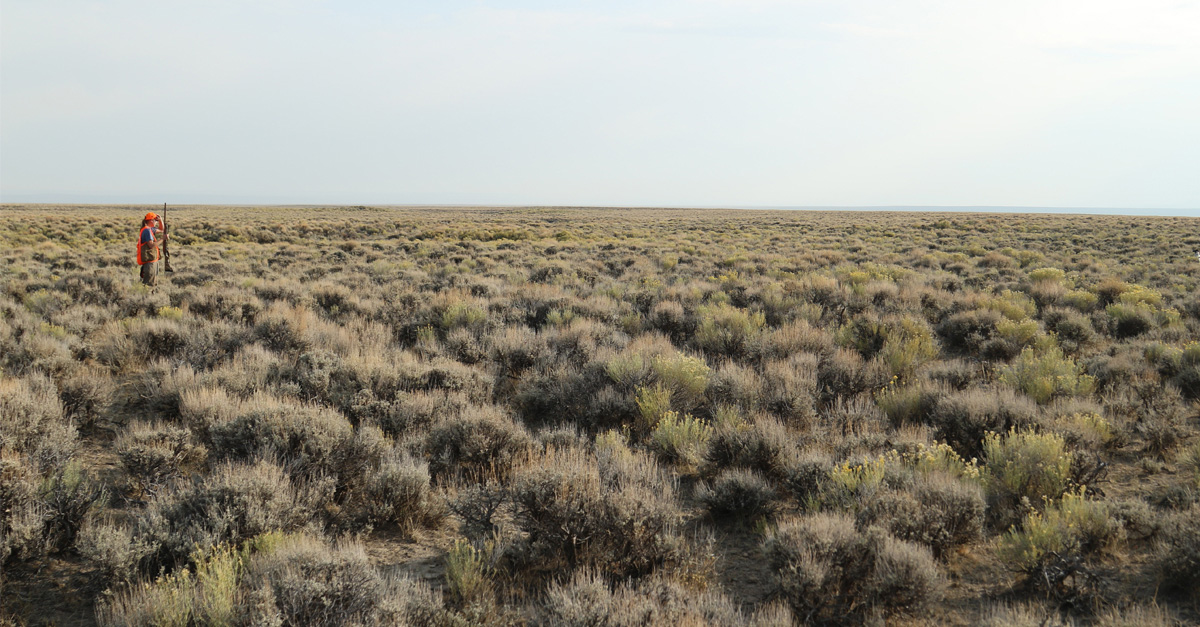State wildlife agencies are reflecting on the spring lek count totals, while a national advocacy effort could help private landowners create more grouse habitat
During the recent Association of Fish and Wildlife Agencies annual fall meeting, state wildlife agencies presented updates on spring sage grouse lek counts that didn’t paint a pretty picture.
Like most years, there were localized increases and decreases, but the overall trend continues heading in the wrong direction. This past spring, the U.S. Geological Survey estimated a long-term, downward trend of about 3 percent for male sage grouse counted on mating grounds, or leks, across the Western states. Their analysis showed that there are 80 percent fewer male sage grouse than in 1965, and half of that loss has occurred in just the last 17 years.
Here are a few highlights shared by biologists last week:
- In Wyoming—the major stronghold state for the bird—sage grouse lek counts were down 13 percent but were higher than at their lowest points in 1996 and 2013.
- Sage grouse in Nevada are in awful shape. Biologists reported on long-term attendance and monitoring of 160 leks in the state, finding a 47.2-percent decline since 2019 and a trend that is 62 percent below the long-term average—the lowest ever recorded for those leks. Drought stress, cheatgrass, wildfire, feral horses, mining, and geothermal development all contribute to habitat loss and degradation in the state.
- California noted that the bi-state sage grouse population—a distinct population in Calif. and Nev.—was stable at present, but the state’s portion of the range-wide population is down and still decreasing from peak highs in past years.
- In Utah, seven of the state’s 11 populations showed declines, while four had increases this past year.
- Washington suffered devastating wildfires last year that burned up significant amounts of what little quality habitat remained there. Lek counts were down 22 percent in the perimeter of the fire and down 4 percent outside the fire zone.
- Oregon was a mild bright spot, with lek counts climbing 12 percent over the 2019 counts, but populations are still well below past highs.
These numbers have forced the states to continue conservatively managing sage grouse harvest. Nevada had to close more sage grouse hunting units, the state of Idaho has now converted to a limited permit system, and two prime areas in Colorado remain closed to grouse hunting.
Unfortunately, while our state wildlife agencies have been conservatively managing hunting for decades, this data is making it harder to defend continued recreational harvest of sage grouse. Nor does it indicate that we can avoid a future listing of the bird under the Endangered Species Act. We need huge investments in habitat restoration and continued protection of the healthy sagebrush that remains for the bird. We identified five major habitat threats that contributed to the depressing numbers this spring, and we continue to work with partners on legislative and administrative solutions that will kickstart meaningful sagebrush conservation efforts.
One such solution is introduction and passage of a North American Grasslands Conservation Act—federal legislation that would help incentivize private landowners to restore grasslands and sagebrush habitat.
Everyone, including sportsmen and women, have a vested interest in this unique ecosystem and the species that call it home. Outdoor recreation, energy and agriculture industries, and the species are all at risk if we don’t stop the bleeding and reverse these trends now.
Be part of the solution by supporting the North American Grasslands Conservation Act now. Take action and learn more about our effort with ten other leading conservation groups.







Perhaps there are Range Allotments with BLM and USFS that could be adjusted to benefit the Sage Grouse until there is recovery of the lost habitat. Are the Animal Unit Months compatible with the carrying capacity for Sage Grouse ??